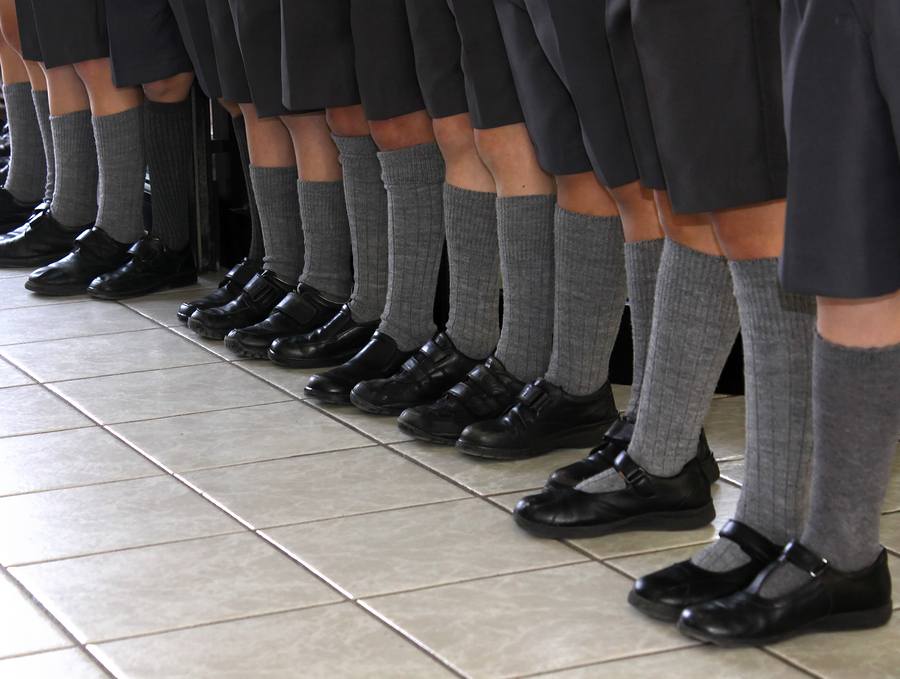
Private School Lawsuits: Contractual v. Constitutional Standard of Care
The relationship between private schools and their students is very different than the one that exists when a student is in a public school. In private schools, the relationship is contractual in nature. The contract is expressed or implied in written documents, such as promotional literature, student applications, and student and staff handbooks. By contrast, the relationship between public schools and students is governed by federal and state statues, such as the Individuals with Disabilities Education Act and Title IX. In public schools, students are afforded constitutional, substantive, and procedural protections that are generally not applicable in a private school. In private schools, academic and conduct issues involving students raise contractual, as opposed to constitutional, issues.
This article will present standards that should be considered by an attorney representing a plaintiff or defendant in private school lawsuits and while assessing the rights of private school students regarding academic matters, discipline, and the right to an education.
Contractual vs. Constitutional Standing
Private school students do not enjoy the wealth of constitutional rights afforded to students in public schools. Public schools are generally treated as governmental institutions, and various statutes protect students against discriminatory actions by governments. The private school, however, is not an arm of the government. Therefore, private schools do not have the same responsibility a public school has to provide a student with a disability an appropriate education, for instance, or to protect a student from harassment, intimidation, and bullying.
Private school students and their parents, however, have come to expect due process if they perceive that their rights have been denied. Relying on the framework of public-sector rights will often focus dispute resolution in a private school on concepts of fairness that mimic due process in public institutions.
Due process means that people will be given an opportunity to tell their side of the story before an authority makes a decision. There is the expectation that students will be treated fairly and will be subject to rules that are fair and consistent for everyone. In the public school sector, this is identified as procedural and substantive due process rights. In private schools, a 1993 case in Louisiana (Ahlum v. Administrators of Tulane Educ. Fund) validated the expectation that rules and processes be clearly stated and that they are neither arbitrary nor capricious.
In a private school, the expectation of fair treatment is viewed in a contractual context: Unacceptable conduct by a student may result in penalties, discipline or sanctions. The language contained in private school promotional materials, admission applications, student and staff handbooks, and other documents forms the basis for such a contract, and the standards articulated in these documents form the basis for determining whether a private school met a professional standard of care. If the language in these documents is concise, unambiguous, and supported by the school’s mission and goals but the student breaches this contract, then the school can act within the confines of the document without retaliation from the student. Whenever these documents create conflicting or ambiguous standards, however, students are likely to contest any discipline on the basis that they have been treated unfairly.
Illustration of Successful Private School Lawsuit
In a prestigious private church-related school, a coach and student were having a sexual relationship. The coach was fired and the student remained at the school. Firing the coach was appropriate and met the school’s standard of care. In the school’s written employment agreement with the coach, there is specific language prohibiting such behavior and outlining the consequence: immediate termination. In addition, the staff handbook clearly identifies prohibited behavior between a staff member and a student. In this situation, there could have been no successful challenge by the coach.
The behavior between the coach and the student was reported, investigated, and found to have merit. He was arrested after admitting guilt. The coach left the school without a challenge. The student, on the other hand, remained at the school. Jessica was a year and a half out from graduation and intended to apply to several colleges based on her excellent grades and competitive success in sports. As soon as the story hit the media, her classmates began harassing the girl, saying, “Why did you ruin Mr. Hank’s career?” “You should have kept quiet. Now look what you’ve done.” “You ought to leave the school.” The talk became so open and abusive that some teachers told the administration that it impeded their ability to teach. Jessica’s continued presence, they maintained, caused such disruption that other students were losing out. Wanting to quiet things down without generating more media attention, administrators met behind closed doors and developed a plan to extract Jessica from the school. Without her, they concluded, the problem would go away and the administration would be able to focus on recruiting other students.
Jessica, meanwhile, continued to be victimized by those she thought of as her friends. The headmaster called Jessica’s father and asked him to come to the office to talk about how the school can curtail the “disruptive” talk among the students and what to do to help Jessica. What parent wouldn’t want to meet with a school official to put an end to his child’s harassment?
Jessica’s father showed up at the headmaster’s office ahead of schedule, anxiously wanting to work with the school to help his daughter. He was invited into the administrator’s office, where he was greeted by the headmaster, the dean of students, and the attorney representing the school. The headmaster told Jessica’s father that she was no longer welcome at the school. She needed to leave, he was told — now, mid-way through the school year — and she would not be allowed to return for her senior year. The headmaster also told Jessica’s father that the school would not write favorable recommendations to colleges. On the other hand, he was told, if he signed a withdrawal agreement immediately, the school would return one half of the year’s tuition, would support her application to another high school for her senior year, and would write favorable letters to colleges later.
Jessica’s father wasn’t prepared to be blindsided. Under the pressure of the situation, he did not consider that the school had very clear policies against student-to-student harassment, intimidation, and bullying. The student handbook clearly prohibited students from intimidating or spreading rumors about one another, making Jessica’s treatment by fellow students in violation of the school’s standard. The student code of conduct called for suspensions of students who engage in such behavior. If the behavior was severe enough or if it occurred a second time, the student could be considered for expulsion. The handbook and code of conduct did not provide for disciplining or expelling the victim of such behavior. Under pressure, Jessica’s father signed the agreement and took his daughter out of the school that day.
He later had second thoughts, realizing that he had been coerced by a school more concerned about its economic future than Jessica’s emotional future. Because this was a private school, the administration had the right to determine whether Jessica would be accepted back for her senior year. However, the school had a duty to follow the professional standard of care it defined in its own promotional materials, student application, and other documents.
Thus, Jessica had been wronged by the school twice — once when it failed to protect her from the coach’s abuse and a second time when it expelled her. She didn’t return, but with the help of an attorney Jessica’s father filed a lawsuit against the school. A jury awarded Jessica $12.5 million in compensatory and punitive damages based on emotional and academic harm. Let’s take a closer look at this case.
Assessing Private School Claims
An attorney representing a plaintiff or defending a private school should follow these steps when assessing a case such as this:
- The standard. The standard that must be applied in a private school is derived from the school’s own documents, such as its promotional materials, statements on student applications, teacher and coach handbooks, student handbooks, and disciplinary codes.
The private school in this example was very clear in its promotional materials and student handbook. In its brochure, the school’s stated goal was to promote the well-being of its students and, to that end, it touted a program described as supportive — one that encourages friendships and discourages inappropriate interactions between students such as harassment, hazing, and bullying. The student handbook clearly stated that no student shall spread rumors about another student and that no student shall harass, intimidate, or bully another student. The school provided information about its policy at an assembly at the beginning of each school year, and every student and parent received a copy of the policy. The student code of conduct reinforced this policy, stating that students found to be spreading rumors would be subjected to discipline, including a suspension of up to three days. A student found to be harassing, intimidating, or bullying another student in a way that interfered with another student’s education or school life would be suspended immediately for three days. If it happened again, the aggressor would be considered for expulsion.
- Breach of standard. Once it is established that the school has a standard of care, the next element to examine is whether it breached that standard by the actions or inactions of its administration and/or other employees.
Knowing what was occurring among the students will indicate what the school, through its administration, knew and whether its policies were being violated. In this case rumors, harassment, intimidation and/or bullying were known through the reports of the teachers, students, and other observers. Documentation in the form of written reports, disciplinary action taken toward any student, and letters to parents and students all form the basis for analyzing how the school met its duty according to its policy. Did the school appropriately respond to reports of rumors? Did the administration investigate the reports of harassment, intimidation, and bullying of Jessica according to its standard? What did the school officials determine — and did they appropriately and reasonably apply its policies?
- Harm to the student. If a private school breached its own established standard, then the next element to review is damage, if any, to the student. This damage can be academic or emotional. If there was no breach of standard, there might still be harm but that harm might have been caused by an intervening variable. The school might successfully defend against harm caused by external factors. On the other hand, if the school breached its own standard, ignored its own policy, or acted outside the contract it had with students and parents, and if it can be argued that this breach caused the student harm, the plaintiff may prevail.
If a student stays home for a period of time because other students’ intimidation, rumors, or bullying made her fearful of going to school, it might be argued that the student was not able to access her education as per her contract with the school. Further, it may be argued that this situation caused damage to the student through the school’s breach of its own contract or policy. When a private school publicly states that it does not tolerate intimidation and that it has a process for disciplining students who engage in such behavior, it has a duty to fulfill that contract. If the school chooses instead only to focus on its concern for negative publicity, an argument can be made that the school focused on the wrong thing, breached its own standard, allowed the harassment to continue, and permitted the student to suffer academically and emotionally.
Summary
The rights of students are different in private schools than in public schools. In private schools, contractual rights prevail, and those rights are determined through explicit and implied agreements in documents produced by the school. In determining the merit of filing an action, plaintiff’s attorney should review these documents and focus on explicit language that leaves no doubt of a contract between the student and the school. When defending against a claim in a private school, defendant attorney should review the language of these same documents and be able to argue that the school did not act in an arbitrary or capricious manner.



Jon
Who Represented Jessica in the case that you cited?
Dr. Edward F. Dragan
Jessica is a fictional character and this example is based on various cases that we have worked on. Thank you for your comment! Best regards, Education Management Consulting, LLC Team.
Dawn
Praise the Lord, I email seeking agreement in prayer for my 12-year-old son, Alex who is having a problem in school with his behavior. The head of the school wants him out and everything that happens she blames him for it. He and his classmates were playing football and Alex and another child were running for the ball when Alex pushed the other child and got the ball. The head of the school says she was watching out of her window and now wants to expel my son. I am looking for a high school for next year and have been unable to find any school willing to take him in the middle of the eighth grade. PLEASE touch and agree with me in prayer so that my child won’t be put out of the school and for him not to be picked on. I know prayer changes things. God Bless.
Dr. Edward F. Dragan
Thank you for your comment! We wish you and your son good luck and positive outcome. Best regards, Education Management Consulting team Team